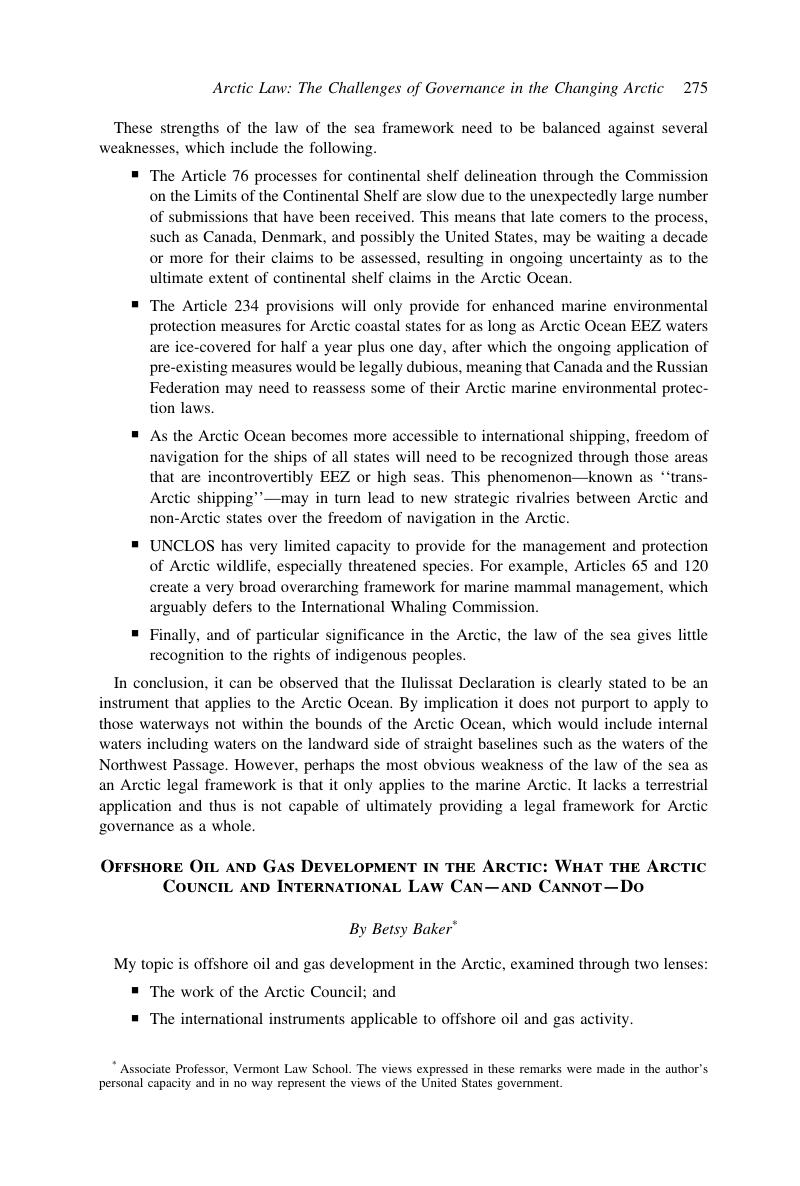Article contents
Offshore Oil and Gas Development in the Arctic: What the Arctic Council and International Law Can—and Cannot—do
Published online by Cambridge University Press: 20 January 2017
Abstract

- Type
- Arctic Law: The Challenges of Governance in the Changing Arctic
- Information
- Copyright
- Copyright © American Society of International Law 2014
References
1 Chabason, Lucien, Offshore OU Exploitation: A New Frontier for International Environmental Law (Institute for Sustainable Development and International Relations (IDDRI), Working Paper No. 11, 2011)Google Scholar.
2 IMO Legal Comm., Information Relating to Liability and Compensation for Oil Pollution Damage Resulting from Offshore Oil Exploration and Exploitation, 98th Sess., Agenda Item 13, Doc. No. LEG 98/13 (Feb. 18, 2011)Google Scholar.
3 IMO Legal Comm., Report of the Legal Committee on the Work of Its Ninety-Ninth Session, Agenda Item 14, Doc. No. LEG 99/14, §13, at 23–28 (Apr. 24, 2012)Google Scholar.
4 Art. 1(g), (j)–(m).
5 Section 5.1.
6 The North-East Atlantic Environment Strategy, Strategy of the OSPAR Commission for the Protection of the Marine Environment of the North-East Atlantic 2010–2020 (OSPAR Agreement 2010-3), Part 2.2 of Offshore Strategic Objectives, http://www.ospar.org/html_documents/ospar/html/10-03e_nea_environment_strategy.pdf.
7 The United States should “[l]ead in the development and adoption of shared international standards, particularly in the Gulf of Mexico and the Arctic.” Recommendations, at 6.
- 1
- Cited by


